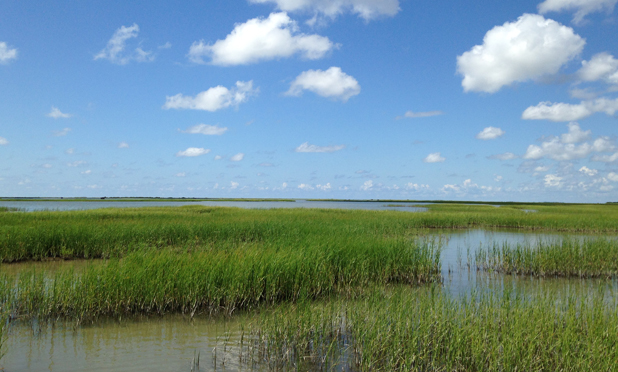The Matagorda Bay Mitigation Trust recently announced funding for 15 environmental projects along the Texas Coast, and researchers from UTMSI will lead three of them.
The Matagorda Bay Mitigation Trust solicited requests for coastal environmental projects in five categories: habitat restoration, environmental research, public education, improving public access, and youth camps. In response to the published advertisements, a total of 26 proposals from 19 entities, totaling 10.5 million dollars, were received. The projects led by UTMSI are as follows:
Evaluating photodegradation products of plastic nurdles and their toxicity in Matagorda Bay, $499,500, University of Texas at Austin Marine Sciences Institute (UTMSI)
This project is led by Dr. Zhanfei Liu as Principal Investigator (PI) and Dr. Wei Xu with Texas A&M University-Corpus Christi as Co-PI and will conduct research on how ultraviolet light from the sun can break down and change plastic molecules and how those changes impact their toxicity.
Reproductive and developmental toxicity of “Forever Chemicals” to Matagorda Bay’s prey fishes, $396,691, University of Texas at Austin Marine Sciences Institute
This project is led by Dr. Kristin Nielsen as Principal Investigator (PI) and Dr. Kerri Ackerly also with UTMSI as Co-PI and will investigate the toxicity of PFAS to estuarine fish and characterize the occurrence and potential ecological risks of PFAS to Matagorda Bay. PFAS are a class of nearly indestructible chemicals that are applied to a wide range of commercial and industrial products. PFAS are now detected in the blood of nearly all humans and wildlife; however, their presence and toxicity to marine biota remains largely unstudied.
Assessing the risks of lithium pollution on estuarine fishes, $399,998, University of Texas at Austin Marine Sciences Institute.
This project is led by Dr. Andrew Esbaugh as Principal Investigator and will combine environmental sampling with lab-based toxicological studies to provide a thorough foundational understanding of the risks of lithium exposure to coastal fish and fisheries. Lithium is an emerging environmental contaminant nationwide. This psychoactive metal is highly mobile in aquatic environments and is known to pass through wastewater treatment facilities. While elevated environmental lithium is being studied with respect to human health risks, little is known about associated risks to aquatic fauna.
The effective time frame of these projects ranges from 12 to 36 months.
“With today’s environmental challenges, it is clear that the significance of these projects to the environmental health of the bay area cannot be overstated. These projects will serve our coastal community – and our state – well,” Steven Raabe, Trustee of the Matagorda Bay Mitigation Trust stated in a press release.
Matagorda Bay Mitigation Trust was founded due to the settlement of a Clean Water Act lawsuit, San Antonio Bay Estuarine Waterkeeper, and S. Diane Wilson v. Formosa. The settlement called for, among other things, the establishment of the Matagorda Bay Mitigation Trust with funding provided by Formosa in the amount of $50 million over a five-year period. The mission of the Trust is to support and fund environmental mitigation projects, studies, and initiatives in the Matagorda Bay and San Antonio Bay ecosystems.
For further information, visit the trust’s website at www.MBMTrust.com.
